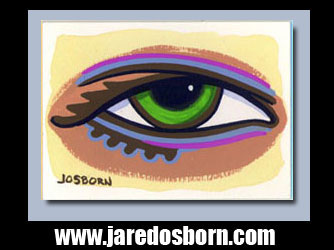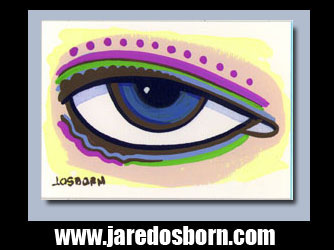I was thinking about music this week. I was specifically thinking about listening to music through headphones. I’ve always liked listening to music that way but it’s been years since I’ve listened much through headphones. That’s because I don’t commute on a bus anymore. I rode that bus on and off for a lot of years and because of that I had plenty of time for music.
I was also a bit of a headphone snob. Not that I was a real audiophile but even in the days of portable tape players I would never use the headphones that came with the player. I always bought some nice headphones to listen on. Not great headphones but they usually cost as much as the player itself. Around fifty to eighty dollars if my memory is correct. That was a lot to lay out for a pair of headphones when I was in my late teens to early twenties (late 80s to early 90s) but it was always a much better listening experience that those awful stock headphones that came with every player. Now earbuds come with everything and I can’t stand them either.
These days, when I listen through headphones, they are a pair of Bose over the ear noise reducing ones. They sound nice and are comfortable so I have no complaints about them. I prefer over the ear headphones but I also have a pair of Audio-Technica in-the-ear noise canceling headphones. I almost never use them except when I’m taking the bus into Manhattan and for some reason want to travel really light. But generally the extra weight and bulk of the over-the-ear ones are worth it. The sound is better and it really does significantly reduce the noise of the bus engine.
I’ve always thought that listening through headphones was the best way to get to know music. Especially new music. Most of the time that I listen to music is as I’m doing other things. It’s the sound track that’s happening as I’m drawing, painting, driving, or puttering around in general. With headphones it’s only me and the music. I can hear all of the words and all of the notes. It’s a more personal experience too. The singer is singing right into your ear. But without that commute I hardly ever listen through headphones anymore. And I don’t hear as much new music anymore. Who has the time to just sit and get to know new music? Only the young.
I have revived my headphone listening a little bit lately. As the weather has been gotten nicer I’ve been going out for walks. I like to get out of the house and into the sunshine. Why not it’s Spring? On some of those walks I’ve been listening to music through my headphones. I do have to pay attention to my surroundings and keep up a good walking pace so it’s not exactly like the, “Trapped on a bus with nothing to do and nowhere to go” listening experience of my old commute but it is fun to listen trough headphones again.
All of my music is digital these days. I listen to it through my Harman Kardon computer speakers mostly but I also have a first generation iPod touch for going portable. I’ve written before about making music playlists and for the last couple of years that is how I’ve mostly listened to music. Well, maybe full albums half of the time and my mix playlists the other half but when I go portable it’s all been playlists.
One odd thing is that I’ve had to change up my playlist listening habits as of late. Y’see I’ve made each playlist about an hour and twenty minutes long. That’s about how much music would fit on an old fashioned music CD. It seemed a comfortable length for a playlist and it generally is. They can’t go on forever after all. I’ve made about forty playlists over the years. They take a while to put together so I only make them when I have the time and the mood strikes me.
The odd problem I was having was that most of the time that I was listening to the playlists was when I was driving. And I don’t usually drive for very long. I’m usually not driving anywhere more than half an hour away. Even there and back wouldn’t use up an entire playlist. So I ended up listening to the first half of my playlists. I never heard the end songs. That cut my available music in half. And after a while I got tired of the beginnings of my playlists. So I began starting them in the middle. It was like having a whole new set of playlists to listen to.
All of this has gotten me thinking about getting some new music. I still buy new music but probably not more than a handful of albums a year. I have tons and tons of music I’ve gotten over the years so there is not a reason to seek out new stuff. And the new stuff I get is often the latest releases from old favorites. I’m finding that a lot of my old favorites are getting stale. Or maybe it’s me. Who knows?
Maybe it’s been that I’m feeling a little nostalgic these days but I want to enjoy some new music while listening through headphones like I used to. I don’t think that’s an unreasonable goal but it means that I’ll actually have to seek out some new music. At least some new four minute a song new pop/rock/alt/singer songwriter music.
Now that I think about it I actually have been finding new music over the last couple of years. But it’s all come from one place. 93.9 WNYC at 11:PM has a show called “New Sounds”. It plays all sorts of music I’ve never heard from genres I never knew existed. I actually started listening to the show way back in the early 80s but I hadn’t heard it in years until I started listening again a couple of years ago.
I’ve gotten into “Holy Minimalism”, ambient music, and Philip Glass from that show. I’ve even purchased a few albums after hearing songs or excerpts of the music on “New Sounds”. Except most of the music I find through that show is instrumental. That’s not the kind of music I like headphones for. Headphones are better for for lyrical music. Instrumental stuff is better in the atmosphere.
I have a strange relationship with instrumental music. As much as I love listening to music I have no inborn talent for making it. I don’t even know what musical notes mean. I have no idea what makes an A different from a C. Explain it to me and five minutes latter I’ll have forgotten it. For whatever reason my brain doesn’t grasp that information like it does other information.
As a result I forget instrumental music very easily. If a song has lyrics then I remember it as a matter of course. If a song has no lyrics then each time I hear it is almost like I’m hearing it for the first time. It’s weird. So those instrumental/ambient albums and the like that I’ve gotten over the last few years stay fresh for me. Even if I hear it twenty times it’s not like hearing singer/songwriter stuff that sticks with me because of the words.
Now I think I want some new music with lyrics that I can listen to through headphones as I walk. I have a couple of things on my iTunes wish list but not many. This could take some doing. It may be too hot out for walks by the time I have it all figured out. Oh well, such is life.




